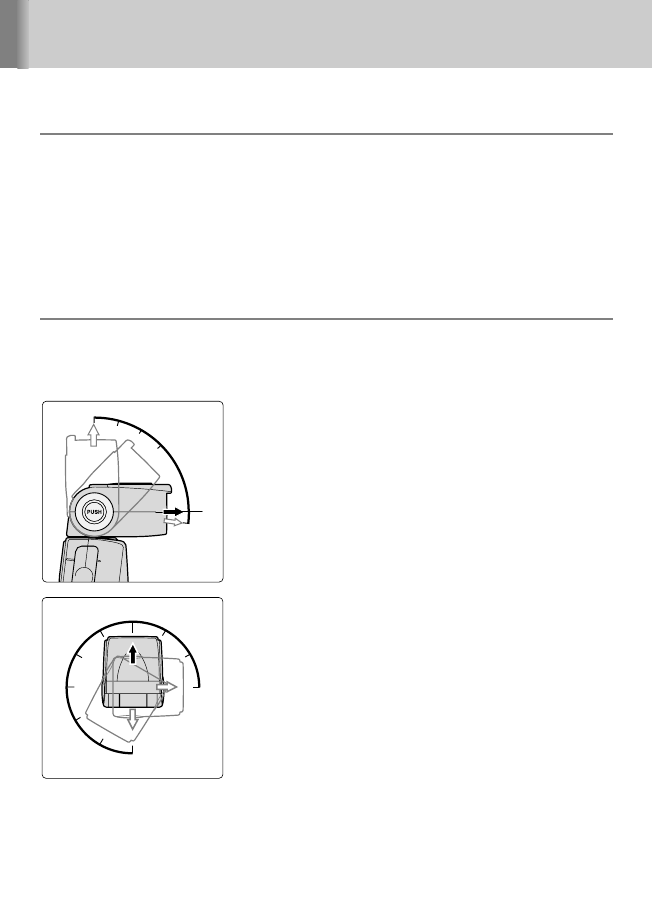
100
Bounce flash operation
■
■
■
Setting the aperture
In bounce flash, there is a light loss of 2–3 stops when compared with normal
flash photography. Therefore, you should use a wider aperture. When the flash
head is adjusted to other than the horizontal/front position, the flash shooting
distance range indicator on the SB-800 disappears. To ensure correct
exposure, first confirm the flash shooting distance range and aperture with the
flash head in the normal position. Next, set this aperture on the camera, then
adjust the flash head to the appropriate bounce position.
• In Non-TTL auto flash operation, set the same aperture on the SB-800.
■
■
■
Setting the flash head
As shown in the illustrations, tilt or rotate the SB-800’s flash head by holding
down the flash head tilting/rotating lock release button and adjusting the flash
head to match the shooing environment or your creative preferences.
Flash head tilting and rotating angles
The SB-800’s flash head tilts up 90° and down –7°,
and rotates horizontally 180° to the left and 90° to
the right.
• Set the flash head at a click stop at the angles shown.
• When taking close-up pictures with flash, tilt the flash
head down to the –7° position (p. 102).
Choosing the reflecting surface
In color photography, select white or highly
reflective surfaces to bounce the light off of.
Otherwise, your pictures will come out with an
unnatural color cast similar to that of the
reflecting surface.
0°
7°
90°
75°
60°
45°
0°
3
0°
60°
90°
120°
1
5
0°
180°
90°
60°
30°


















